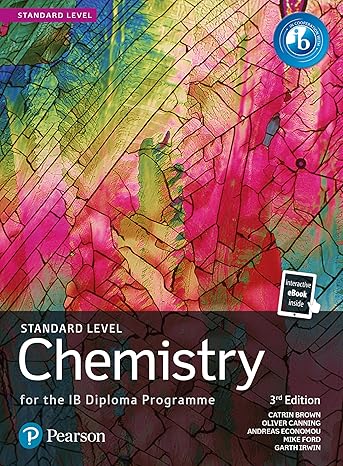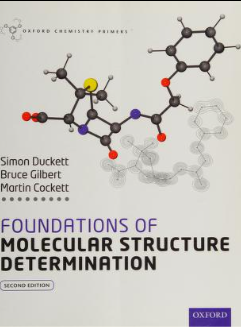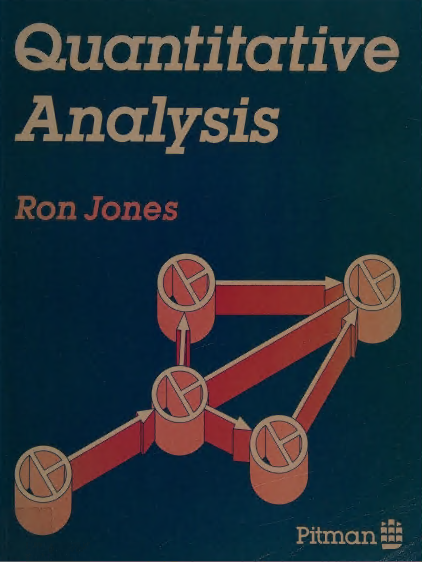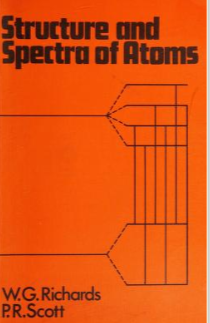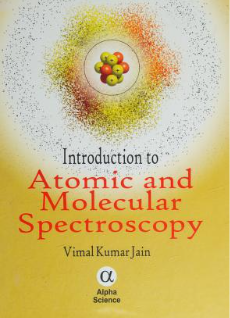y
2 Kinematics and Stresses of Deformable Bodies, 15
2.1 Introduction, 15
2.2 Description of Motion, 16
2.3 Some Representative Flow Fields, 18
2.3.1 Steady-State Shear Flow Field, 18
2.3.2 Steady-State Elongational Flow Field, 19
xii CONTENTS
2.4 Deformation Gradient Tensor, Strain Tensor, Velocity Gradient Tensor
and Rate-of-Strain Tensor, 20
2.4.1 Deformation Gradient Tensor, 20
2.4.2 Strain Tensor, 22
2.4.3 Velocity Gradient Tensor and Rate-of-Strain Tensor, 25
2.5 Kinematics in Moving (Convected) Coordinates, 29
2.5.1 Convected Strain Tensor, 30
2.5.2 Time Derivative of Convected Coordinates, 32
2.6 The Description of Stress and Material Functions, 35
Appendix 2A: Properties of Second-Order Tensors, 38
Invariants, 38
Principal Values and Principal Directions, 39
The Polar Decomposition Theorem, 40
Appendix 2B: Tensor Calculus, 41
Curvilinear Coordinates and Metric Tensors, 41
Time Derivatives of Second-Order Tensors, 42
Problems, 45
Notes, 48
References, 48
3 Continuum Theories for the Viscoelasticity of Flexible Homogeneous
Polymeric Liquids, 50
3.1 Introduction, 50
3.2 Differential-Type Constitutive Equations for Viscoelastic Fluids, 51
3.2.1 Single-Mode Differential-Type Constitutive Equations, 51
3.2.2 Multimode Differential-Type Constitutive Equations, 58
3.3 Integral-Type Constitutive Equations for Viscoelastic Fluids, 60
3.4 Rate-Type Constitutive Equations for Viscoelastic Fluids, 64
3.5 Predicted Material Functions and Experimental Observations, 66
3.5.1 Material Functions for Steady-State Shear Flow, 66
3.5.2 Material Functions for Oscillatory Shear Flow, 72
3.5.3 Material Functions for Steady-State Elongational Flow, 76
3.6 Summary, 80
Appendix 3A: Derivation of Equation (3.5), 81
Appendix 3B: Derivation of Equation (3.16), 82
Appendix 3C: Derivation of Equation (3.29), 83
Appendix 3D: Cayley–Hamilton Theorem, 83
Appendix 3E: Derivation of Equation (3.97), 84
Appendix 3F: Derivation of Equation (3.103), 85
Problems, 86
Notes, 88
References, 90
4 Molecular Theories for the Viscoelasticity of Flexible Homogeneous
Polymeric Liquids, 91
4.1 Introduction, 91
CONTENTS xiii
4.2 Static Properties of Macromolecules and Stochastic Processes in the
Motion of Macromolecular Chains, 93
4.2.1 Static Properties of Macromolecules, 94
4.2.2 Stochastic Processes in the Motion of Macromolecular
Chains, 97
4.3 Molecular Theory for the Viscoelasticity of Dilute Polymer Solutions
and Unentangled Polymer Melts, 102
4.3.1 The Rouse Model, 103
4.3.2 The Zimm Model, 106
4.3.3 Prediction of Rheological Properties, 109
4.4 Molecular Theory for the Viscoelasticity of Concentrated Polymer
Solutions and Entangled Polymer Melts, 112
4.4.1 Reptation Mechanism and the Tube Model, 115
4.4.2 The Dynamics of a Primitive Chain, 117
4.4.3 Contour Length Fluctuation and Constraint Release
Mechanism, 120
4.4.4 Constitutive Equations of State, 125
4.4.5 Comparison of Prediction with Experiment, 131
4.5 Summary, 142
Appendix 4A: Derivation of Equation (4.6), 143
Appendix 4B: Derivation of Equation (4.71), 145
Problems, 146
Notes, 147
References, 151
5 Experimental Methods for Measurement of the Rheological
Properties of Polymeric Fluids, 153
5.1 Introduction, 153
5.2 Cone-and-Plate Rheometry, 154
5.2.1 Steady-State Shear Flow Measurement, 154
5.2.2 Oscillatory Shear Flow Measurement, 160
5.3 Capillary and Slit Rheometry, 163
5.3.1 Plunger-Type Capillary Rheometry, 163
5.3.2 Continuous-Flow Capillary Rheometry, 166
5.3.3 Slit Rheometry, 173
5.3.4 Critical Assessment of Capillary and Slit Rheometry, 180
5.3.5 Viscous Shear Heating in a Cylindrical or Slit Die, 188
5.4 Elongational Rheometry, 189
5.5 Summary, 193
Problems, 195
Notes, 198
References, 198
xiv CONTENTS
Part II
Rheological Behavior of Polymeric Materials
6 Rheology of Flexible Homopolymers, 203
6.1 Introduction, 203
6.2 Rheology of Linear Flexible Homopolymers, 204
6.2.1 Temperature Dependence of Steady-State Shear Viscosity
of Linear Flexible Homopolymers, 204
6.2.2 Temperature Dependence of Relaxation Time and First Normal
Stress Difference in Steady-State Shear Flow of Linear Flexible
Homopolymers, 210
6.2.3 Temperature-Independent Correlations for the Linear Dynamic
Viscoelastic Properties of Linear Flexible
Homopolymers, 213
6.2.4 Effects of Molecular Weight and Molecular Weight Distribution
on the Rheological Behavior of Linear Flexible
Homopolymers, 219
6.3 Rheology of Flexible Homopolymers with Long-Chain
Branching, 233
6.4 Summary, 241
Problems, 241
Notes, 243
References, 244
7 Rheology of Miscible Polymer Blends, 247
7.1 Introduction, 247
7.2 Phase Behavior of Polymer Blend Systems, 248
7.3 Experimental Observations of the Rheological Behavior of Miscible
Polymer Blends, 252
7.3.1 Time–Temperature Superposition in Miscible Polymer
Blends, 252
7.3.2 Rheology of Polymer Blends Exhibiting UCST, 261
7.3.3 Rheology of Polymer Blends Exhibiting LCST, 269
7.4 Molecular Theory for the Linear Viscoelasticity of Miscible Polymer
Blends and Comparison with Experiment, 273
7.4.1 Linear Viscoelasticity Theory for Miscible
Polymer Blends, 274
7.4.2 Comparison of Theory with Experiment, 279
7.5 Plateau Modulus of Miscible Polymer Blends, 286
7.6 Summary, 288
Problems, 290
Notes, 291
References, 292
CONTENTS xv
8 Rheology of Block Copolymers, 296
8.1 Introduction, 296
8.2 Oscillatory Shear Rheometry of Microphase-Separated Block
Copolymers Exhibiting Upper Critical Order–Disorder Transition
Behavior, 301
8.2.1 Oscillatory Shear Rheometry of Symmetric or Nearly Symmetric
Block Copolymers, 302
8.2.2 Oscillatory Shear Rheometry of Highly Asymmetric Block
Copolymers, 306
8.2.3 Effect of Thermal History on the Oscillatory Shear Rheometry
of Block Copolymers, 319
8.3 Oscillatory Shear Rheometry of Microphase-Separated Block
Copolymers Exhibiting Lower Critical Disorder–Order
Transition Behavior, 327
8.4 Linear Viscoelasticity of Disordered Block Copolymers, 331
8.4.1 Effect of Molecular Weight on the Zero-Shear Viscosity
of Disordered Diblock Copolymers, 332
8.4.2 Effect of Block Length Ratio on the Linear Dynamic
Viscoelasticity of Disordered Block Copolymers, 337
8.4.3 Molecular Theory for the Linear Viscoelasticity of Disordered
Block Copolymers, 345
8.5 Stress Relaxation Modulus of Microphase-Separated Block Copolymer
Upon Application of Step-Shear Strain, 355
8.6 Steady-State Shear Viscosity of Microphase-Separated Block
Copolymers, 359
8.7 Summary, 363
Notes, 364
References, 365
9 Rheology of Liquid-Crystalline Polymers, 369
9.1 Introduction, 369
9.2 Theory for the Rheology of LCPs, 379
9.2.1 Theory for Rigid Rodlike Macromolecules with
Monodomains, 379
9.2.2 Theory for Rigid Rodlike Macromolecules with
Polydomains, 394
9.3 Rheological Behavior of Lyotropic LCPs, 400
9.4 Rheological Behavior of Thermotropic Main-Chain LCPs, 406
9.4.1 Effect of Thermal History on the Rheological Behavior of
Thermotropic Main-Chain LCPs, 406
9.4.2 Transient Shear Flow of Thermotropic Main-Chain LCPs, 413
9.4.3 Flow Aligning Behavior of Thermotropic
Main-Chain LCPs, 424
9.4.4 Intermittent Shear Flow of Thermotropic Main-Chain LCPs, 426
9.4.5 Evolution of Dynamic Moduli of Thermotropic Main-Chain
LCPs Upon Cessation of Shear Flow, 428
xvi CONTENTS
9.4.6 Effect of Preshearing of Thermotropic Main-Chain LCPs on
the Rheological Behavior, 430
9.4.7 Reversal Flow of Thermotropic Main-Chain LCPs, 433
9.4.8 Effect of Molecular Weight on the Rheological Behavior of
Thermotropic Main-Chain LCPs, 435
9.4.9 Effect of Bulkiness of Pendent Side Groups on the Rheo�Optical Behavior of Thermotropic Main-Chain LCPs, 441
9.5 Rheological Behavior of Thermotropic Side-Chain LCPs, 444
9.6 Summary, 451
Appendix 9A: Derivation of Equation (9.3), 454
Appendix 9B: Derivation of Equation (9.11), 455
Appendix 9C: Derivation of Equation (9.15), 457
Appendix 9D: Derivation of Equation (9.23), 458
Appendix 9E: Derivation of Equation (9.28), 460
Appendix 9F: Derivation of Equation (9.30), 461
Appendix 9G: Derivation of Equation (9.49), 462
Appendix 9H: Derivation of Equation (9.50), 463
Notes, 464
References, 465
10 Rheology of Thermoplastic Polyurethanes, 470
10.1 Introduction, 470
10.2 Effect of Thermal History on the Rheological Behavior
of TPUs, 474
10.2.1 Time Evolution of Dynamic Moduli of TPU during Isothermal
Annealing, 474
10.2.2 Thermal Transitions in TPU during Isothermal
Annealing, 477
10.2.3 Hydrogen Bonding in TPU during Isothermal Annealing, 479
10.3 Linear Dynamic Viscoelasticity of TPUs, 484
10.3.1 Frequency Dependence of Dynamic Moduli of TPU
under Isothermal Conditions, 484
10.3.2 Temperature Dependence of Dynamic Moduli of TPU during
Isochronal Dynamic Temperature Sweep Experiment, 486
10.4 Steady-State Shear Viscosity of TPU, 488
10.5 Summary, 490
References, 491
11 Rheology of Immiscible Polymer Blends, 493
11.1 Introduction, 493
11.2 Experimental Observations of Rheology–Morphology Relationships
in Immiscible Polymer Blends, 495
11.2.1 Effect of Flow Geometry on the Steady-State Shear Viscosity
and Morphology of Immiscible Polymer Blends, 495
11.2.2 Effect of Blend Composition on the Steady-State Shear Flow
Properties of Immiscible Polymer Blends, 504
CONTENTS xvii
11.2.3 Linear Dynamic Viscoelastic Properties of Immiscible
Polymer Blends, 511
11.2.4 Extrudate Swell of Immiscible Polymer Blends, 512
11.3 Consideration of Large Drop Deformation and Bulk Rheological
Properties of Immiscible Polymer Blends in Pressure-Driven
Flow, 519
11.3.1 Finite Element Analysis of Large Drop Deformation in the
Entrance Region of a Cylindrical Tube, 524
11.3.2 Theoretical Approach to the Prediction of Rheology–
Morphology–Processing Relationships in Pressure-Driven
Flow of Immiscible Polymer Blends, 536
11.4 Summary, 542
Problems, 543
Notes, 544
References, 544
12 Rheology of Particulate-Filled Polymers, Nanocomposites, and
Fiber-Reinforced Thermoplastic Composites, 547
12.1 Introduction, 547
12.2 Rheology of Particulate-Filled Polymers, 548
12.2.1 Rheology of Particulate-Filled Molten Thermoplastics
and Elastomers, 549
12.2.2 Rheology of Molten Thermoplastics with Chemically Treated
Fillers, 559
12.2.3 Theoretical Consideration of the Rheology of
Particulate-Filled Polymers, 565
12.3 Rheology of Nanocomposites, 569
12.3.1 Rheology of Organoclay Nanocomposites Based on
Thermoplastic Polymer, 575
12.3.2 Rheology of Organoclay Nanocomposites Based on Block
Copolymer, 583
12.3.3 Rheology of Organoclay Nanocomposites Based on
End-Functionalized Polymer, 593
12.4 Rheology of Fiber-Reinforced Thermoplastic Composites, 603
12.4.1 Theoretical Consideration of Fiber Orientation in Flow, 603
12.4.2 Experimental Observations, 609
12.5 Summary, 614
Appendix 12A: Derivation of Equation (12.19), 615
Appendix 12B: Derivation of Three Material Functions for
Steady-State Shear Flow from Equation (12.30), 616
Problems, 617
Notes, 618
References, 620
xviii CONTENTS
13 Rheology of Molten Polymers with Solubilized Gaseous
Component, 623
13.1 Introduction, 623
13.2 Rheological Behavior of Molten Polymers with Solubilized
Gaseous Component, 624
13.2.1 Experimental Methods for Rheological Measurements of
Molten Polymers with Solubilized Gaseous Component, 624
13.2.2 Experimental Observations of Reduction in Melt Viscosity by
Solubilized Gaseous Component, 629
13.3 Theoretical Consideration of Reduction in Melt Viscosity
by Solubilized Gaseous Component, 639
13.3.1 Depression of Glass Transition Temperature of Amorphous
Polymer by the Addition of Low-Molecular-Weight Soluble
Diluent, 639
13.3.2 Depression of Melting Point of Semicrystalline Polymer by
the Addition of Low-Molecular-Weight Soluble Diluent, 641
13.3.3 Theoretical Interpretation of Reduction in Melt Viscosity by
Solubilized Gaseous Component, 641
13.4 Summary, 647
Problems, 648
Notes, 649
References, 649
14 Chemorheology of Thermosets, 651
14.1 Introduction, 651
14.2 Chemorheology of Unsaturated Polyester, 656
14.2.1 Viscosity Rise during Cure of Neat Unsaturated
Polyester, 658
14.2.2 Chemorheological Model for Neat Unsaturated
Polyester, 660
14.2.3 Cure Kinetics of Neat Unsaturated Polyester, 664
14.2.4 Effects of Particulates on the Chemorheology of Unsaturated
Polyester, 673
14.2.5 Effects of Low-Profile Additive on the Chemorheology
of Unsaturated Polyester, 677
14.2.6 Oscillatory Shear Flow during Cure of Unsaturated
Polyester, 682
14.3 Chemorheology of Epoxy Resin, 683
14.4 Chemorheology of Thermosetting Polyurethane, 688
14.5 Summary, 691
Problems, 692
Notes, 693
References, 693
Author Index, 695
Subject Index, 704
ادامه ...
بستن ...

